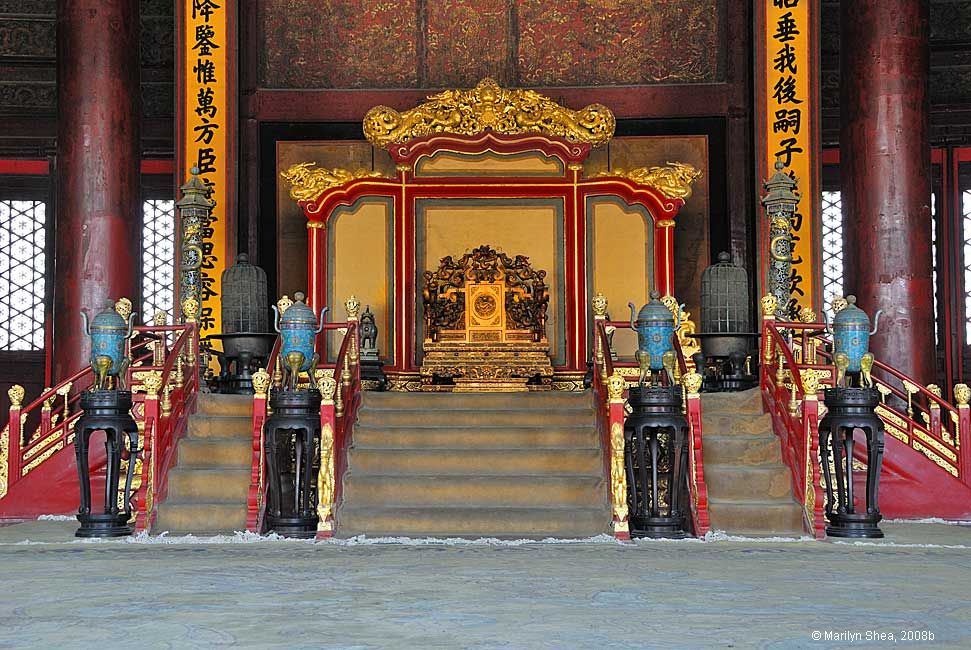 |
|
Originally, the imperial examinations were held in the Hall of Supreme Harmony 太和殿 (Tàihé Diàn), but beginning in 1789, the Palace Examinations were held in the Hall of Preserving Harmony 保和殿 (Bǎo Hé Diàn) every three years. During the Ming and Qing dynasties, there were three levels of exams: the county and prefectural level, the provincial level, and the national level. The national exam was presided over by the emperor. The imperial examinations were begun during the Han Dynasty (206 BC - 220 AD) as a method to identify likely candidates for the administration of the government. It was a layer of meritocracy over the nobility. If you passed the exams at the highest level, you had a good chance of moving up to the highest posts in government ministries. In the early years, the focus was on being able to read and interpret the literature of the day. The Confucian Four Books and Five Classics 四書五經 (Sìshūwǔjīnɡ) formed the focus under most dynasties, although there were variations. Under the Ming and Qing dynasties these works were followed slavishly as a link to the traditions of the past. The four books include: the Great Learning, the Doctrine of the Mean, Analects, and Mencius; and the five classics include: I Ching, Classic of Poetry, Three Rites, Classic of History, and the Spring and Autumn Annals. An educated man (or woman) would be able to quote extensively from these texts. Many games were based on competitions to identify obscure references or to complete lines begun by another. It was sort of like Jeopardy, but with a limited context. The civil service system was not used continuously through history, but it was restored under the Tang Dynasty and refined under the Song Dynasty. Under the Ming and Qing dynasties, three hundred scholars from all over the country came to Beijing once every three years and took exams for three days and nights. The best of the best were given special honors. The emperor had a memorial carved for them and placed in the Confucian Temple. Their future was assured, but anyone who made it to the national level and didn't totally bomb out could expect a place in the ministries. Once there, their ability would determine their ultimate position. Most of the successful candidates were from wealthy families who could afford the books and tutors to prepare their sons and nephews for the exams. However, Chinese folklore is filled with true tales of boys from poor families who, by dint of their total devotion to study, passed the exams. By late Qing Dynasty, the top candidates of the exams did not have the same rosy future. The treasury didn't even have enough money to carve their memorials and some paid for them themselves. The secular education being delivered by new academies were teaching subjects such as mathematics, science, geography, and engineering which prepared young men for much better jobs in a new economy. The imperial examination system was abolished in 1905. |
http://hua.umf.maine.edu/China/HistoricBeijing/Forbidden_City/index.html
Last
update: January 2010
© Marilyn Shea, 2009